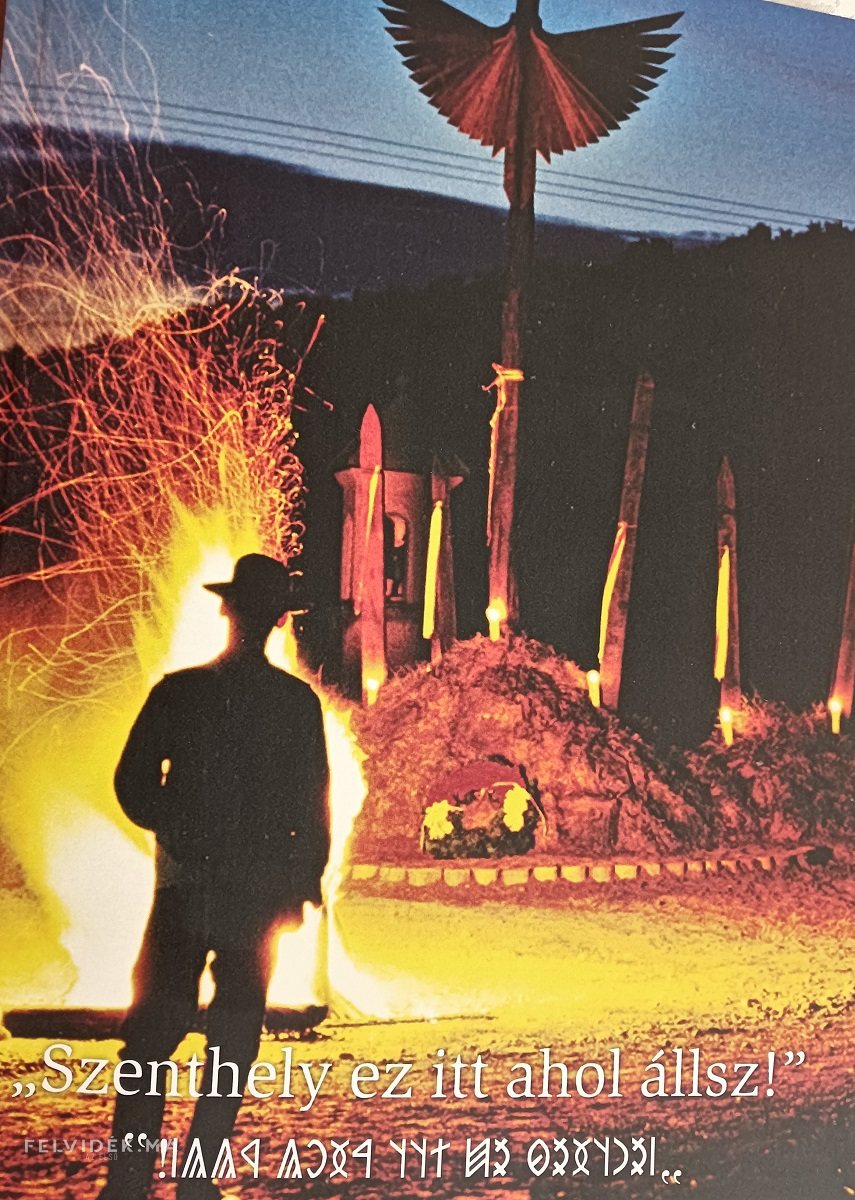The post office brought another beautiful print by Aladár Z.Urbán, published in Palóc Társasági Könyvek series “This is the holy place where you stand!” Entitled, its title is also written in runic writing on the title page. With runic writing, because thanks to Z.Urbán Aladár, President of the Palóc Association, this ancient heritage of ours has been brought to our attention, and thanks to him many people in our regions have become familiar with runic writing, and children compete in it, displaying their knowledge and skills. The title is taken from Sándor Kóródy and can be read on a granite column erected during the Verecki celebration of 1896.
The name Z.Urbán Aladár is not known in the highlands, but we can also say in the areas of the Carpathian Basin inhabited by Hungarians. He was once a school teacher in Ibolifarbo, a village in the Naguicortos region. To date, it is a beacon for the Palok Association, with which it selflessly carries out its mission of promoting national awareness, preserving and disseminating education, according to capabilities and circumstances.
But back to their latest book, which is now the seventeenth book in the series of volumes published by the company!
The 151-page volume includes biographies of important figures associated with Palóc Land, and the historical provinces of Haunt and Nograd, as well as photographs and descriptions of memorial plaques, statues, columns, tombstones and medallions that were inaugurated and created at the initiative of the Palóc Association and with the help and cooperation of other organizations in honor of all these individuals.
The first memorial plaque was inaugurated on 12.12.1993 in honor of Aladár Zsélyi in Bosa and Csalar, and the last plaque to date was on 22.9.2023. Dzso Baloji In memory of Epolipalog. The total number of plaques, statues, columns, tombstones and medals is 28, which is an unbelievable number, but it is true, and there is a lot of respectful effort and organization, as well as clearly door-knocking and management behind this achievement.
The introduction to the publication was written by ethnographer Peter Halasz, who in his voluminous and also informative text writes: “What do our revered ancestors tell us? What do the Baluk people remind people of today with their monuments to Baluk Tarsasag? And what example do they set for all of us who want to remain ‘Hungarians’?” Naturally, each of them refers to something else, because their message – in the example of their actions, their creations and their lives – is emphasized in different places and a very concise and precise definition.
In leafing through the book, we are shocked to see how many valuable people are serving a noble cause and carrying the great ideals that the two provinces, the good land of the Balox, have brought to the world without exaggeration.
We certainly do not know many of them, we do not even know about many of them, and we may not even know the inhabitants of the region. That's why we need to create memorial sites, mark birthplaces, leave memorials, and recognize those who look out for deserving people and hold them accountable.
The names and works of Kalmán Miksáth, Imre Madách, Balint Palási, and Gyula Krodi are well known, but many do not know whether the aircraft designer Zsélyi Aladár was born in Bussa or Csaláro (it is not clear), the painter Lajos Kubányi Kubányi in Alsóesztergályon, the writer István Pajor in Ibpolinik. , historian Ferenc Kopényi in Kovar, in Velszelny, local historian Antal Gjörcki, in Losonkon, Hungarian researcher Ferenc José Badenyi.
Thanks to Z.Urbán Aladár and the Palóc Association, the name and poetry of Sándor Sajó are back in the public consciousness, as he was a silent and forgotten poet of our nation for decades. Many paintings and statues are dedicated to him in his birthplace, Ébolsag, but also in Gaspereny and Budapest.
To the volume's compiler's credit, in addition to photographs of the memorial sites, they also provide the most important information, including the location, name of the creator of the statues, plaques, columns, tombstones, and medals, their materials, size, date of opening, and organizations involved in their implementation. The index of place names in Hungarian-Slovak is a useful guide and a good help in finding your way. A list of people who helped publish the volume has also been announced. The cover of the book is by Sandor Patassi.
The speeches delivered at the opening of memorial sites can serve our own enlightenment. They all speak to the public of that time in a refined manner, but they contain a lot of noble ideas and useful information, which can enrich our spiritual and cultural awareness and behavior as well.
I would like to place this publication on the shelves of every Hungarian primary and secondary school library, where our young people can learn from it, but even teachers can benefit from it. We hope that there will be a continuation, in terms of erecting monuments and marking memorial sites and in the series of volumes as well!
(Maria Biniak/Felvidék.ma)












































